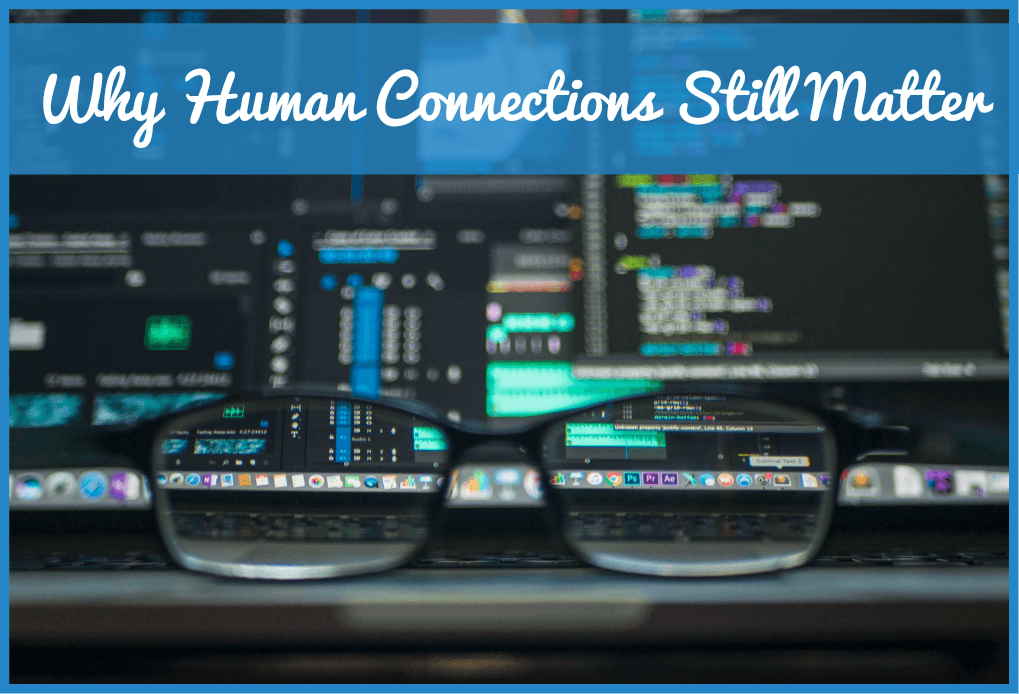
Why Human Connections Still Matter
With every passing year technology becomes ever more deeply embedded at the center of our workplaces – while in some industries, the changes seem to come in on a monthly basis. Likewise, the relentless evolution of mobile and web technologies floods our social lives with ever more reasons to turn our backs on the real world and focus on the digitally-created version instead.
The debate over whether 2,000 Instagram likes can compare with 100 real world connections has been recycled ad nauseam, but what about our work connections?
Most of us appreciate the value of having to wait 15 seconds instead of ten days for a message to pass back and forth, or the advantages of using video conferencing to bridge distances when an important meeting is scheduled, but are there technology-related challenges to overcome too? (apart from endlessly generating new passwords or locating device chargers, of course!)
The Problem with Virtual Relationships
Sometimes it is easier to deal with people remotely than face-to-face, and herein lies one of the dangers of becoming too comfortable with technology-mediated human connections. As unpredictable organic lumps of chemical reactions, us humans need something more than logic and efficiency to give our lives meaning, and the absence of this can lead to frustration and plummeting morale.

Add to this our spooky knack of misunderstanding remote communications, particularly if we’re not feeling on top of the world, and the potential for friction is easy to see.
If there’s any part of an organisation that needs to think seriously about bringing back the human touch – it’s HR!
To start with, think about any irritations you’ve been feeling about the workplace.
- How many of them have come about through a lack of face-to-face contact?
- Did someone send a short, sharp message on Slack/Yammer that annoyed you or have you had your judgement overruled in preference to a set of protocols churned out by a machine?
- Have your weekly meetings been cut short or cancelled lately because the critical information can be ‘cascaded’ by DM?
Companies are forever looking to maintain the human connection with their customers through sophisticated branding, but what about the shared bonds between staff members? Doesn’t that need attention too?
Our social evolution has equipped us with the amazing ability to read nuances in body language and facial expression. The more emotionally intelligent among us can immediately pick up on the fact that a team member does not understand a concept or is unhappy about it – these signals can be lost in translation if human connections are impoverished, harming the company’s unity.
Mastering Emotional Intelligence - Online Course
Machines and Sensory Dynamism
Technology may also be having an impact on how we perceive the sensory world around us. Despite the ever-increasing number of pixels our gadgets can cram on to a screen display, our eyes still do not experience the same rich input as they would in an external environment, and this is even more true for our other senses.
This has led some experts to fear that an over-reliance on technology, particularly those that use ‘flat‘ displays like most mobile and text interfaces, actually trains us, over a working lifetime, to become less perceptive to the vibrancy in the world that surround us, a large source of inspiration for creatives throughout history.
There are similar concerns about the ‘dumbing down‘ effect of being able to search for the answers to our questions using technology alone.
Are we being robbed of the organic reward mechanism that makes learning and understanding pleasurable activities?
Instead of computers becoming more human-like, are humans in danger of regressing into little more than flesh-and-blood machines?
Rediscovering our Human Brilliance
Technological evolution is, of course, natural and something to be embraced – just not to be completely enveloped by.
To avoid the negative consequences of emotional isolation and creative and intellectual decay among its workforce, the forward-thinking company needs to maintain the relationship between human and machine – so that technology remains a tool of the company and not its master.
For example, apps excel in tasks requiring speed and the storage of vast amounts of data but they are surely a long way from being able to experience a Eureka moment!, inspire a movement, make a decision on gut instinct or comfort a staff member who is going through a hard time.
These important, and uniquely human, traits are as important as they ever were, and need to be brought in, maintained and strengthened by an effective Human Resources function.
© New To HR


